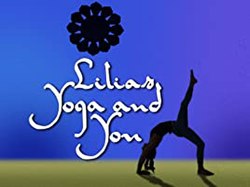| Lilias, Yoga and You | |
|---|---|
 | |
| Genre | Exercise |
| Created by | Lilias Folan |
| Presented by | Lilias Folan |
| Country of origin | United States |
| Original language | English |
| No. of episodes | 500 [1] |
| Production | |
| Production company | WCET Cincinnati |
| Original release | |
| Network | PBS |
| Release | October 5, 1970 – 1999 |
| Related | |
| Lilias! Yoga Gets Better With Age | |
Lilias, Yoga and You (later shortened to Lilias!) is a PBS television show hosted by Lilias Folan, a Cincinnati, Ohio-based practitioner of yoga as exercise. The show first aired on October 5, 1970 on Cincinnati PBS member station WCET and three years later was carried on PBS across the United States, where it ran until 1999. [2]

